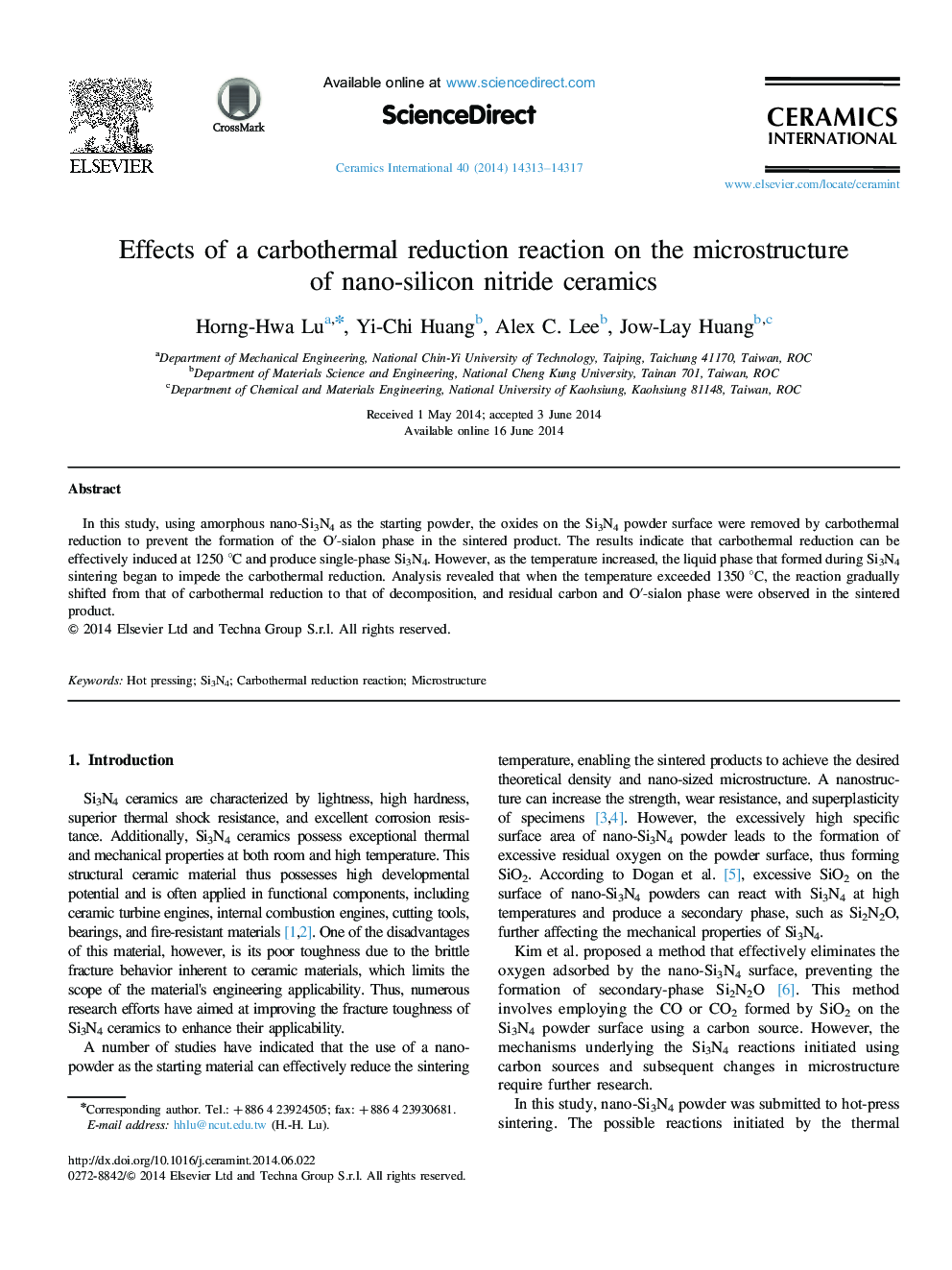| Article ID | Journal | Published Year | Pages | File Type |
|---|---|---|---|---|
| 10625046 | Ceramics International | 2014 | 5 Pages |
Abstract
In this study, using amorphous nano-Si3N4 as the starting powder, the oxides on the Si3N4 powder surface were removed by carbothermal reduction to prevent the formation of the Oâ²-sialon phase in the sintered product. The results indicate that carbothermal reduction can be effectively induced at 1250 °C and produce single-phase Si3N4. However, as the temperature increased, the liquid phase that formed during Si3N4 sintering began to impede the carbothermal reduction. Analysis revealed that when the temperature exceeded 1350 °C, the reaction gradually shifted from that of carbothermal reduction to that of decomposition, and residual carbon and Oâ²-sialon phase were observed in the sintered product.
Keywords
Related Topics
Physical Sciences and Engineering
Materials Science
Ceramics and Composites
Authors
Horng-Hwa Lu, Yi-Chi Huang, Alex C. Lee, Jow-Lay Huang,
